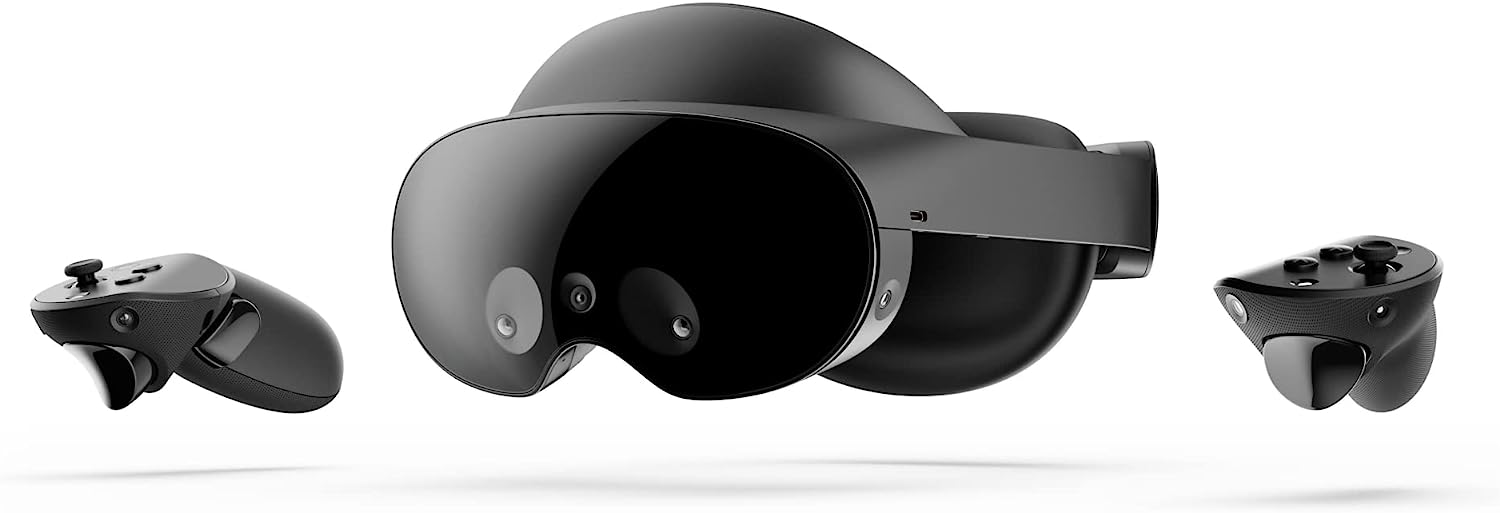
Title: Battle of VR Titans: Meta Quest 3 vs. Valve Index vs. Meta Quest Pro
In the ever-evolving world of virtual reality (VR), choosing the right headset can be a daunting task. With the rapid advancement of technology, VR enthusiasts are constantly on the lookout for the next big thing in immersive experiences. Three contenders that often come up in discussions are the Meta Quest 3, Valve Index, and Meta Quest Pro. Each boasts its own set of features and advantages, catering to different needs and preferences. In this blog post, we’ll delve into a detailed comparison of these VR headsets to help you make an informed decision.
Design and Comfort
The design and comfort of a VR headset are crucial factors, especially for extended gaming sessions. The Meta Quest 3 and Meta Quest Pro share a similar design philosophy, featuring a sleek, lightweight build with adjustable straps for a comfortable fit. Both offer a balanced weight distribution, reducing strain on the user’s head and face.
On the other hand, the Valve Index takes a different approach with its unique halo strap design, which provides excellent weight distribution and comfort. The Index also features adjustable IPD (interpupillary distance) settings, allowing users to customize the spacing between the lenses for optimal clarity.
Display and Visuals
When it comes to display quality and visuals, all three headsets offer impressive specs, but there are differences worth noting. The Meta Quest 3 and Meta Quest Pro both feature fast-switching LCD panels with a resolution of 1832 x 1920 pixels per eye, providing crisp visuals with minimal screen door effect.
The Valve Index, however, takes things up a notch with its dual LCD panels, boasting a higher combined resolution of 2880 x 1600 pixels and a higher refresh rate of up to 144Hz. This results in smoother motion and more detailed visuals, making it a top choice for hardcore gamers and VR enthusiasts.
Tracking and Controllers
Tracking accuracy and controller responsiveness play a crucial role in delivering a seamless VR experience. The Meta Quest 3 and Meta Quest Pro utilize inside-out tracking technology, which eliminates the need for external sensors by using built-in cameras to track movement. Both headsets come with Oculus Touch controllers, which offer precise tracking and ergonomic design.
On the other hand, the Valve Index employs external base stations for precise tracking, resulting in superior accuracy, especially in larger play spaces. The Index controllers, known as “Knuckles,” feature advanced finger tracking technology, allowing for more natural hand movements and interactions in VR environments.
Performance and Hardware
Under the hood, all three headsets pack powerful hardware to drive immersive VR experiences. The Meta Quest 3 and Meta Quest Pro are powered by Qualcomm’s Snapdragon XR2 platform, delivering smooth performance and low-latency gameplay. Both headsets offer 128GB and 256GB storage options, respectively, providing ample space for storing games and apps.
The Valve Index, on the other hand, relies on a gaming PC to deliver high-fidelity VR experiences. With its recommended specs including a powerful GPU like the Nvidia RTX 30 series, the Index can handle graphically demanding games with ease. However, this also means additional cost and setup complexity compared to standalone VR headsets like the Meta Quest series.
Content Library and Ecosystem
The availability of content and ecosystem support can significantly impact the overall VR experience. The Meta Quest 3 and Meta Quest Pro run on Meta’s Oculus platform, which boasts a vast library of games, apps, and experiences, ranging from immersive AAA titles to indie gems. With Meta’s strong developer support and ongoing investments in VR content, the Quest ecosystem continues to thrive.
The Valve Index, while compatible with a wide range of VR titles on platforms like SteamVR, lacks the curated ecosystem and exclusive content offerings found in the Meta Quest ecosystem. However, Valve’s commitment to open VR standards ensures compatibility with a diverse array of hardware and software, giving users more flexibility in their VR experiences.
Price and Value Proposition
Last but not least, price plays a significant role in the decision-making process for many consumers. The Meta Quest 3 and Meta Quest Pro are positioned as more affordable options compared to the Valve Index, offering standalone VR experiences without the need for additional hardware. The Meta Quest 3 starts at $299 for the base model, while the Meta Quest Pro starts at $399 for the 128GB version.
In contrast, the Valve Index comes with a higher price tag, starting at $999 for the full kit, which includes the headset, controllers, and base stations. While the Index offers superior performance and features, its premium price may deter budget-conscious consumers.
Conclusion
In conclusion, the Meta Quest 3, Valve Index, and Meta Quest Pro each offer compelling features and advantages, catering to different needs and preferences in the VR space. The Meta Quest 3 and Meta Quest Pro excel in affordability, ease of use, and standalone capabilities, making them ideal choices for casual users and newcomers to VR.
On the other hand, the Valve Index stands out with its superior display quality, tracking accuracy, and PC-powered performance, making it a top choice for hardcore gamers and VR enthusiasts who demand the best. Ultimately, the right VR headset for you will depend on your budget, preferences, and intended use cases, so be sure to weigh the pros and cons carefully before making your decision.